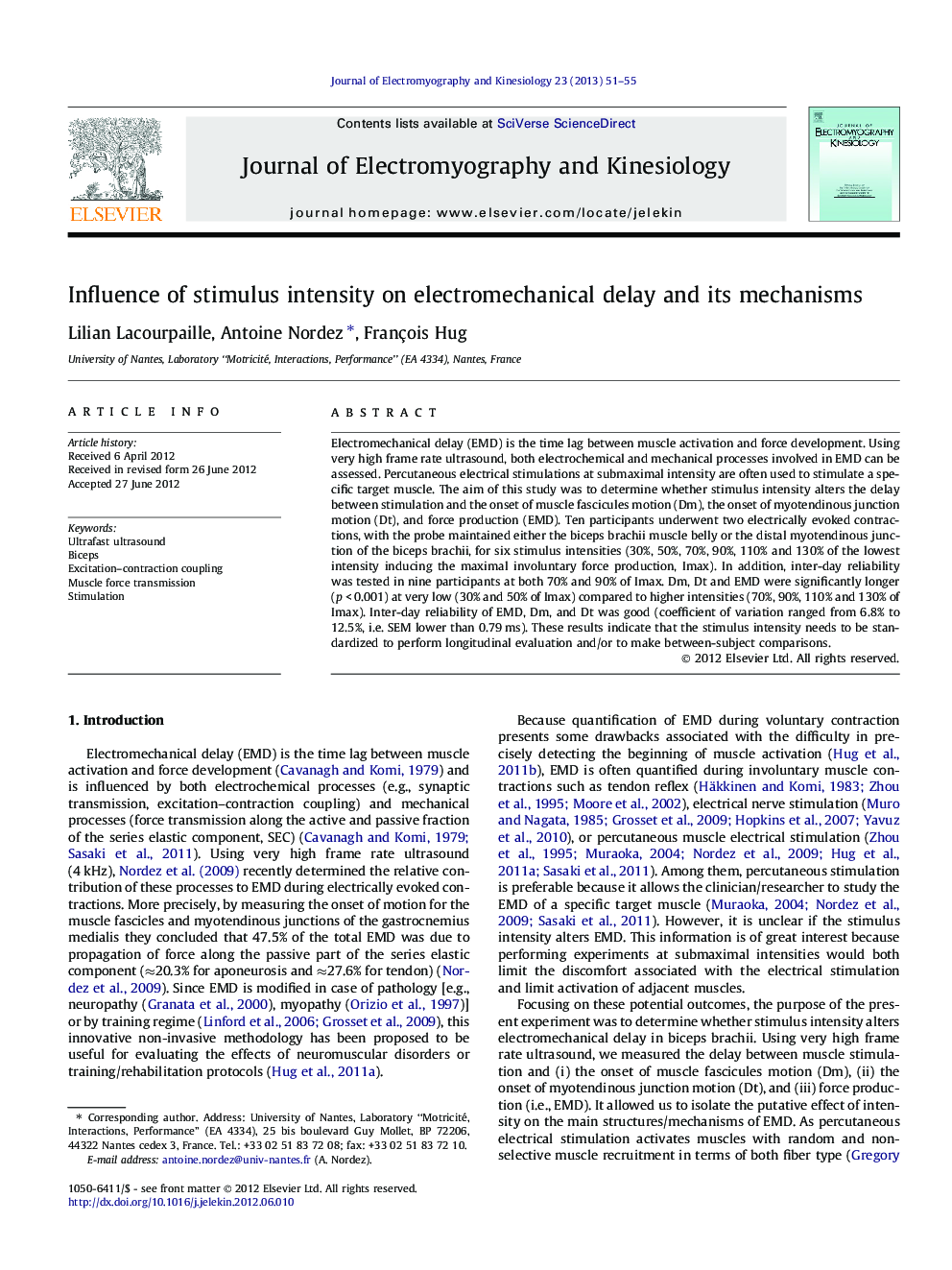| Article ID | Journal | Published Year | Pages | File Type |
|---|---|---|---|---|
| 6210414 | Journal of Electromyography and Kinesiology | 2013 | 5 Pages |
Electromechanical delay (EMD) is the time lag between muscle activation and force development. Using very high frame rate ultrasound, both electrochemical and mechanical processes involved in EMD can be assessed. Percutaneous electrical stimulations at submaximal intensity are often used to stimulate a specific target muscle. The aim of this study was to determine whether stimulus intensity alters the delay between stimulation and the onset of muscle fascicules motion (Dm), the onset of myotendinous junction motion (Dt), and force production (EMD). Ten participants underwent two electrically evoked contractions, with the probe maintained either the biceps brachii muscle belly or the distal myotendinous junction of the biceps brachii, for six stimulus intensities (30%, 50%, 70%, 90%, 110% and 130% of the lowest intensity inducing the maximal involuntary force production, Imax). In addition, inter-day reliability was tested in nine participants at both 70% and 90% of Imax. Dm, Dt and EMD were significantly longer (p < 0.001) at very low (30% and 50% of Imax) compared to higher intensities (70%, 90%, 110% and 130% of Imax). Inter-day reliability of EMD, Dm, and Dt was good (coefficient of variation ranged from 6.8% to 12.5%, i.e. SEM lower than 0.79 ms). These results indicate that the stimulus intensity needs to be standardized to perform longitudinal evaluation and/or to make between-subject comparisons.
